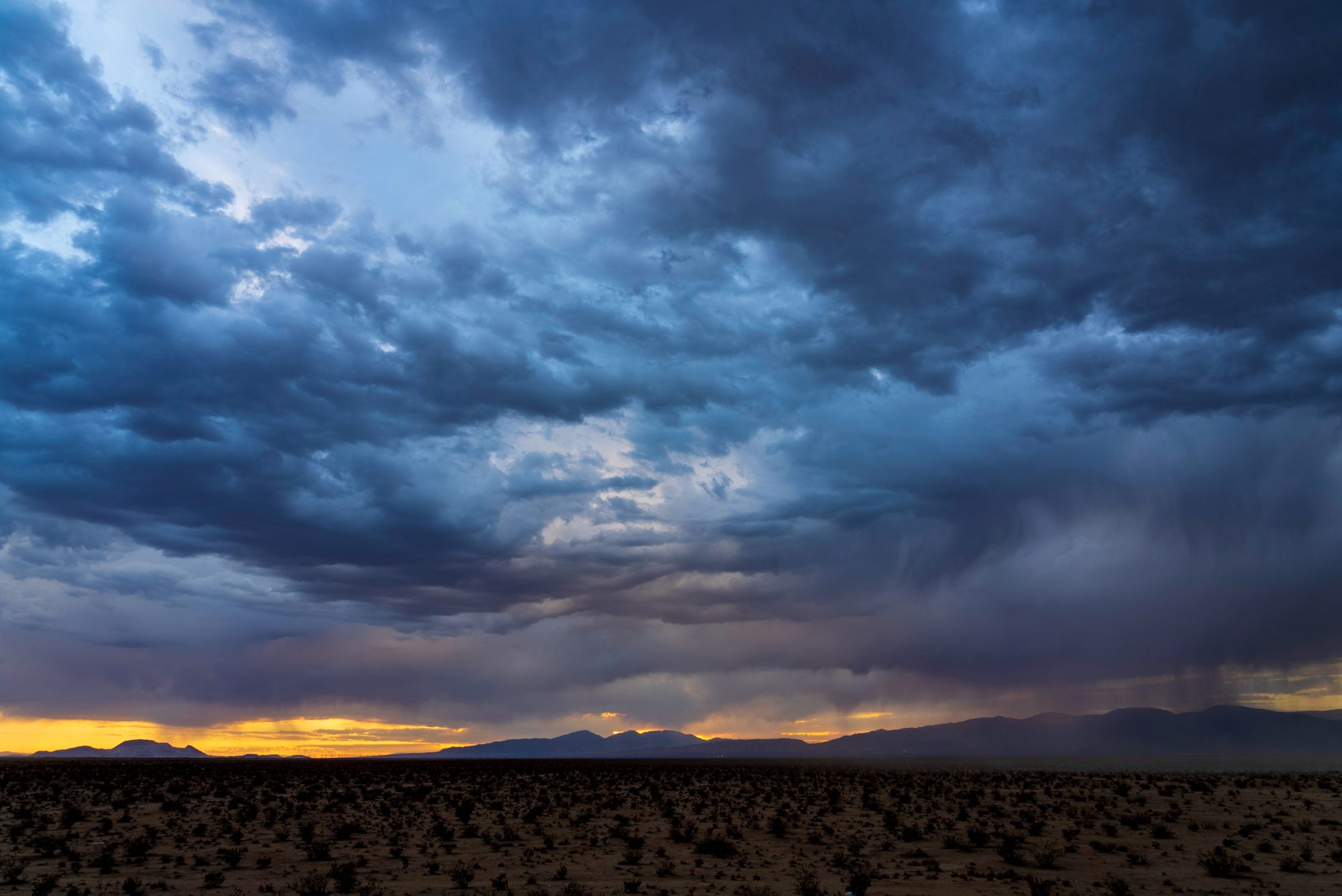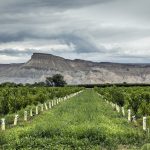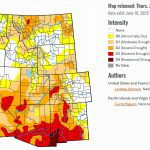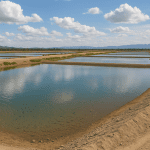- Hurricane Priscilla’s remnants could reach the Colorado River Basin.
- Forecasts show widespread rainfall across Arizona, New Mexico, and Colorado.
- Flash floods and landslides are possible in desert and mountain areas.
- Heavy rainfall may offer short-term water relief, but flood risks remain high.
Wednesday, October 8, 2025 — As of yesterday, Hurricane Priscilla remained a strong Category 2 storm off the western coast of Mexico, moving northwest with maximum sustained winds of about 110 miles per hour. The National Hurricane Center reported the storm’s eye roughly 200 miles south-southwest of Baja California’s southern tip. While winds are expected to weaken before landfall, Priscilla’s moisture will not. Meteorologists say that the storm’s remnants will be drawn northward, carrying heavy tropical rain into the Southwestern United States.
reported the storm’s eye roughly 200 miles south-southwest of Baja California’s southern tip. While winds are expected to weaken before landfall, Priscilla’s moisture will not. Meteorologists say that the storm’s remnants will be drawn northward, carrying heavy tropical rain into the Southwestern United States.
Forecasters expect Priscilla to weaken as it moves onshore across the central Baja Peninsula later this week, but the storm’s core moisture will surge into the Four Corners region—particularly Arizona, New Mexico, western Colorado, and southeast Utah. This atmospheric setup could produce rainfall rates of more than one inch per hour in some desert locations, an intensity that can overwhelm dry washes and low-lying terrain.
Flooding and Landslide Risks.
According to the National Weather Service , the influx of tropical moisture will bring “widespread showers with embedded thunderstorms” through the weekend. Some areas may see 2 to 3 inches of rain, while isolated locations in southern Arizona or near Flagstaff could record 3 to 5 inches or more. In the desert, that level of rainfall is often enough to trigger flash flooding or mudslides, especially in areas affected by wildfires or steep topography.
, the influx of tropical moisture will bring “widespread showers with embedded thunderstorms” through the weekend. Some areas may see 2 to 3 inches of rain, while isolated locations in southern Arizona or near Flagstaff could record 3 to 5 inches or more. In the desert, that level of rainfall is often enough to trigger flash flooding or mudslides, especially in areas affected by wildfires or steep topography.
Officials warn that saturated soils in higher elevations could lead to localized landslides or debris flows. Even in normally dry valleys, urban drainage systems could be overwhelmed if rainfall rates exceed an inch per hour. Large swells and dangerous surf conditions are also affecting portions of the Baja California coast, adding to the storm’s hazards.
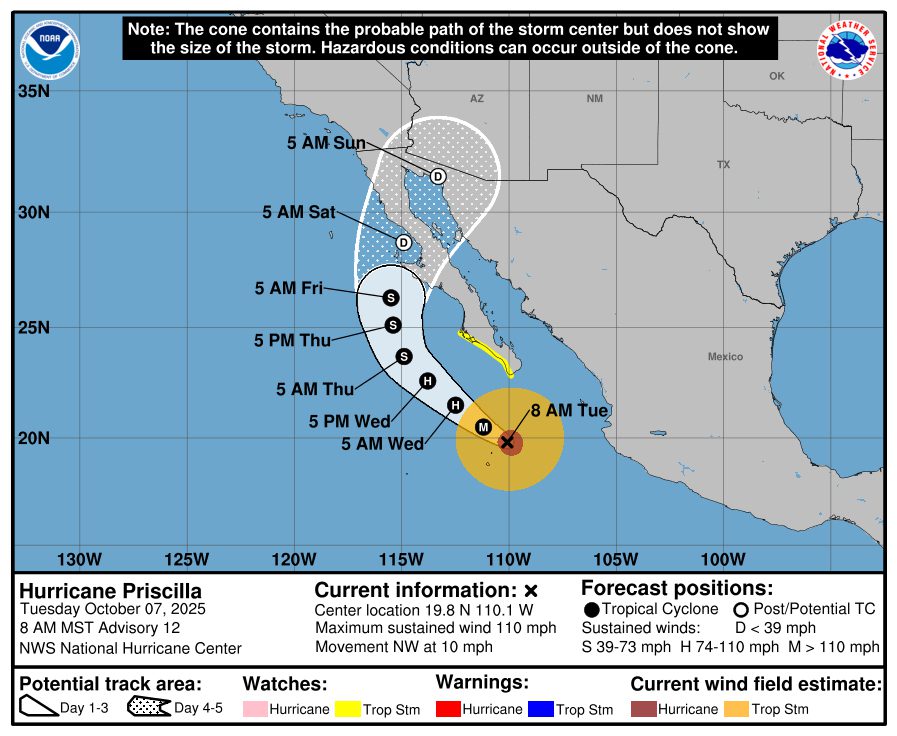
Regional Implications for the Colorado River Basin.
While the moisture will not significantly alter long-term drought conditions across the Colorado River Basin, it may provide short-term relief for depleted soils and vegetation. Recent outlooks from the Weather Prediction Center note that the “healthy tap of tropical moisture from Hurricane Priscilla” will enhance rainfall potential across the southern Rockies and the upper watershed that feeds parts of the Colorado River system.
However, hydrologists emphasize that tropical storm remnants can create a misleading sense of abundance. Most of the rainfall will arrive quickly, with limited opportunity for deep groundwater recharge. The resulting runoff can also transport sediment and debris into tributaries, temporarily reducing water quality.
Looking Ahead.
The National Weather Service’s Grand Junction office notes that the moisture surge will continue through the weekend, with cooler temperatures following the storm’s passage. Residents across Arizona, New Mexico, and western Colorado are urged to monitor weather alerts closely and avoid flood-prone areas.
notes that the moisture surge will continue through the weekend, with cooler temperatures following the storm’s passage. Residents across Arizona, New Mexico, and western Colorado are urged to monitor weather alerts closely and avoid flood-prone areas.
Meteorologists say that while the desert Southwest needs rain, too much at once can be as damaging as drought. The key, as always, will be balance—a rare commodity in a region defined by extremes.
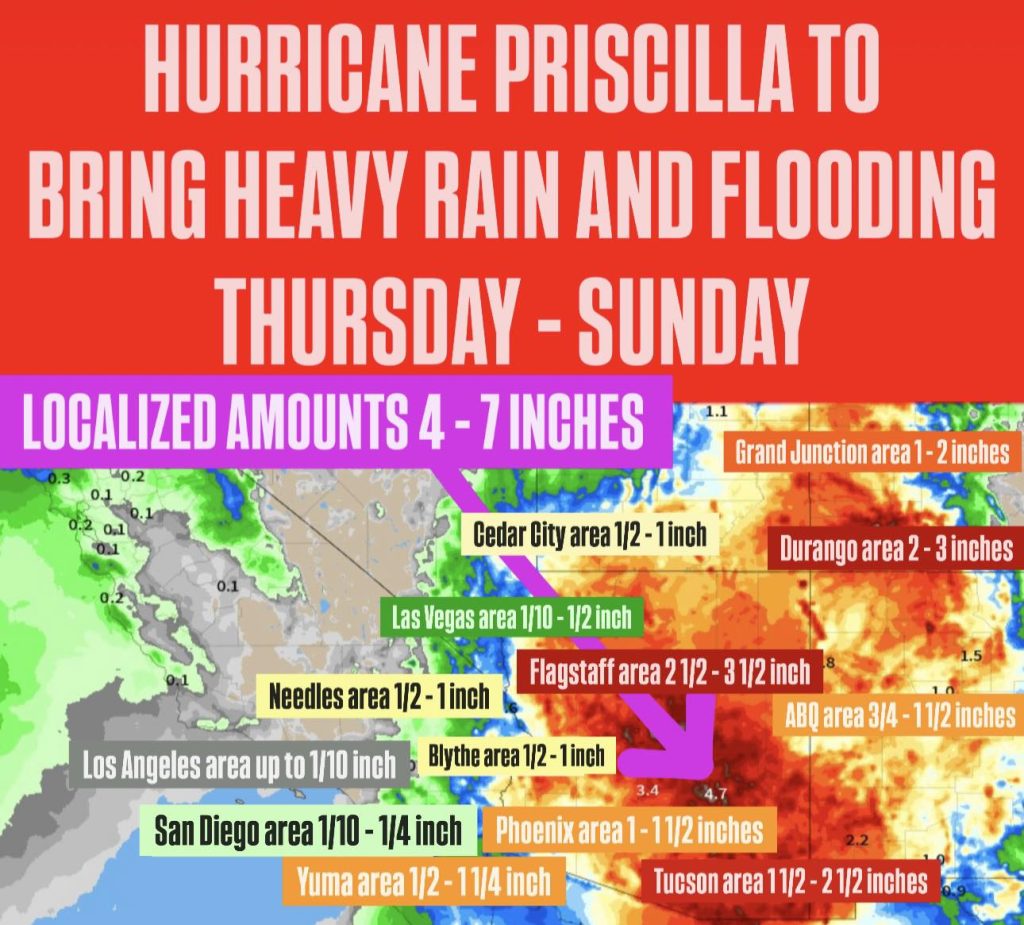
FAQ
Q: How much rain is expected from Priscilla’s remnants?
Most areas in Arizona and New Mexico could receive 2 to 3 inches, while some higher elevations or storm-focused regions may reach 5 inches or more.
Q: Will this storm end the drought?
No. While it may temporarily improve soil moisture and vegetation health, the rainfall is unlikely to significantly affect long-term drought or reservoir levels.
Q: What areas are most at risk for flooding?
Southern Arizona, western New Mexico, and the Four Corners region face the highest risk, particularly where burn scars or steep terrain exist.
Q: Could this help the Colorado River?
In a limited way. Some runoff may reach tributaries, but most of the rainfall will run off quickly rather than replenish major reservoirs.
Q: What precautions should residents take?
Avoid driving through flooded roadways, monitor local advisories, and stay alert for flash-flood warnings—especially near washes, canyons, and mountain slopes.

